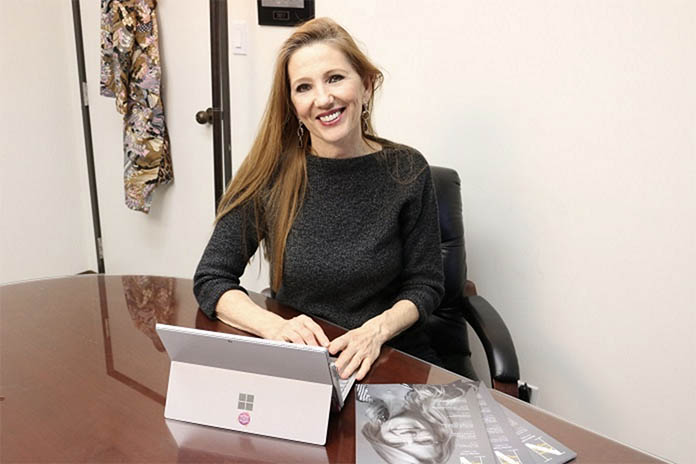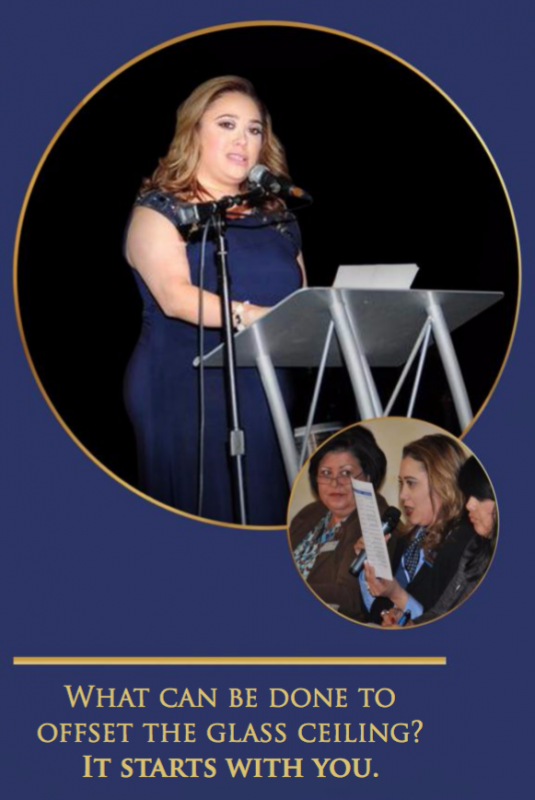 by Vanessa Montañez
by Vanessa Montañez
Does the Glass Ceiling exist in today’s world of equality? What do you think? I think the facts speak for themselves.
We all know women earn less than men. Women who worked full-time, year-round in 2014 earned, on average, 79 percent of men’s median annual earnings, according to the U.S. Census Bureau. Over the years the gender wage gap has lessened but we are still too slow in our progress.
This past presidential election showed that we are still not ready for the first female President of the United States of America. Of the 195 independent countries in the world, only 17 are led by women, according to the U.S. State Department. “I can’t believe we just put the biggest crack in the glass ceiling yet,” stated Hillary Clinton at the 2016 Democratic National Convention (DNC). Are we one step closer?
The National Association of Women in Real Estate Business (NAWRB) Diversity and Inclusion Leadership Council (NDLIC) brings women’s diversity and inclusion to the forefront of the housing ecosystem with accountability and results by raising the number of women in the housing finance industry. The numbers look promising for women looking for a career in real estate, as 62 percent of all Realtors® are female, according to the 2016 National Association of Realtors® Member Profile.
On the C-suite level the numbers are inadequate. The 2015 Catalyst Census reveals that men held 80.1 percent of S&P 500 board seats, while women only held 19.9 percent and men held 73.1 percent of S&P 500 new directorships, while women only held 26.9 percent. The Census also found that: 2.8 percent of S&P 500 companies had zero women directors; 24.6 percent had one woman; and only 14.2 percent of companies had 30 percent or more women on their boards. Within S&P 500 companies, women held: 4.2 percent of CEO positions, 9.5 percent of top earner positions, 25.1 percent of executive/senior-level officials and managers positions, 36.4 percent of first/mid-level officials and managers positions; additionally, 44.3 percent of total employees were women.
Women need to achieve higher educational attainment with advanced degrees in their respective fields. The more education once receives the more income one earns. Women also need to study fields where men have predominantly dominated. Examples would start with STEMF, a term I altered to include science, technology, engineering, mathematics and finance.
Take risks in your career. Apply for the position you want but may not feel qualified for because you do not meet every qualification of the job. Women need to break the glass ceiling at every level. Whether you are starting your career or making a change in your career. It all starts with you.

 Login
Login


















 Commuting to San Francisco from her home is out of the question. A two-hour commute would mean having to leave home before 5:00 a.m. and moving closer, perhaps to Oakland, still results in a commute exceeding an hour.
Commuting to San Francisco from her home is out of the question. A two-hour commute would mean having to leave home before 5:00 a.m. and moving closer, perhaps to Oakland, still results in a commute exceeding an hour.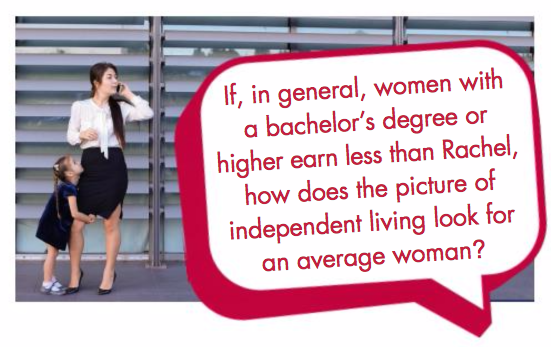 Despite earning more than the median weekly income of $1,049 for women with a bachelor’s degree or higher, Rachel’s salary doesn’t go very far in the City by the Bay. In fact, after rent, Sam’s preschool tuition is more than all her other bills combined.
Despite earning more than the median weekly income of $1,049 for women with a bachelor’s degree or higher, Rachel’s salary doesn’t go very far in the City by the Bay. In fact, after rent, Sam’s preschool tuition is more than all her other bills combined.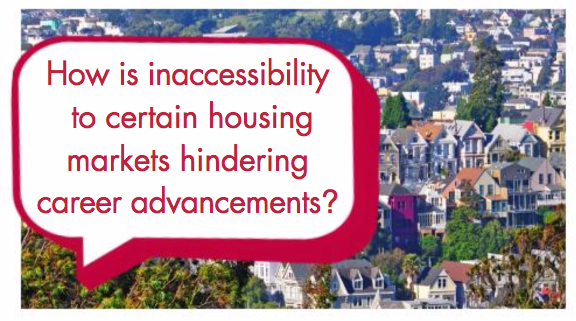 Rent for a two-bedroom apartment in San Francisco would run Rachel about $4,550 a month. Neighboring Oakland’s rent is much more affordable, but still averages a whopping $2,500 a month in addition to the commute. With rents averaging $3,330, Rachel wouldn’t even be able to afford downsizing to a one-bedroom in San Francisco.The difficulty in affording a move for her job is an unusual challenge for Rachel, a successful, independent person who has always earned her keep by the sweat on her brow. Her life has developed in line with her achievements. Now, though, Rachel’s efforts have landed her a dream job, but they cannot sustain the living expenses. The scale is tipped, the conditions imbalanced. She is qualified to teach students in San Francisco, but not capable of living in their city.
Rent for a two-bedroom apartment in San Francisco would run Rachel about $4,550 a month. Neighboring Oakland’s rent is much more affordable, but still averages a whopping $2,500 a month in addition to the commute. With rents averaging $3,330, Rachel wouldn’t even be able to afford downsizing to a one-bedroom in San Francisco.The difficulty in affording a move for her job is an unusual challenge for Rachel, a successful, independent person who has always earned her keep by the sweat on her brow. Her life has developed in line with her achievements. Now, though, Rachel’s efforts have landed her a dream job, but they cannot sustain the living expenses. The scale is tipped, the conditions imbalanced. She is qualified to teach students in San Francisco, but not capable of living in their city.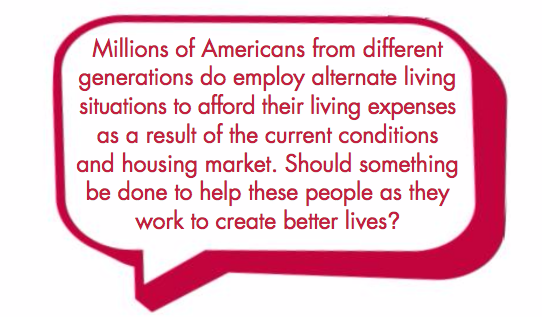 Being priced out of certain neighborhoods has been a reality for Americans. This is a difficult situation, but could she make it work if she really wanted to? There’s options. Possible options range from having a roommate, maybe two, asking someone to borrow money, even just making do and enduring a long commute to the city.
Being priced out of certain neighborhoods has been a reality for Americans. This is a difficult situation, but could she make it work if she really wanted to? There’s options. Possible options range from having a roommate, maybe two, asking someone to borrow money, even just making do and enduring a long commute to the city.

